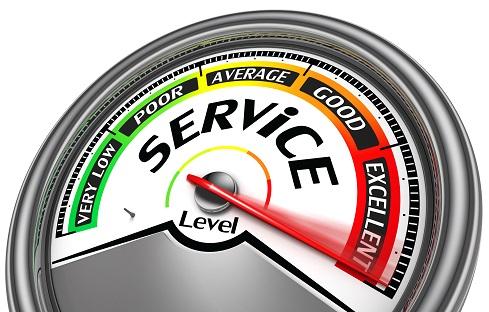Utilizing managed services can be cost efficient for an enterprise, but be sure to look beyond cost to how you manage those managed service providers.

The IT managed service industry is expected to see impressive growth. According to research firm, Markets and Markets, the overall IT managed services segment is expected to see a growth rate of nearly 70% over the next five years. Some of the driving factors behind this growth include continued movement to the cloud, increasing data compliance risk and a lack of in-house technical skills to manage an ever-growing enterprise infrastructure. But if you're looking to join the masses and go "all-in" with managed services, it's important to identify certain obstacles you must overcome.
CFO's love managed services because they look appealing from a dollars and cents perspective. One of the reasons for this is the fact that while many enterprise infrastructures require expensive and specialized technical talent it's not usually on a full-time basis. With managed services, you pay a fraction of the cost for said IT talent, yet, remember that you're paying for a shared resource. Even if you are assigned specific managed services staff, they typically are working with more than one client. What this means is that you need to be both organized and flexible when it comes to scheduling certain managed services resources. If you think you'll be able to schedule MSP maintenance windows at a moment’s notice, you're going to be sorely disappointed. Instead, make sure you schedule your needs well in advance to lock in the technical talent needed.
Another thing to keep in mind is that your MSP does not understand the needs and desires of your users. This is an especially important consideration if the MSP has direct contact with your end-users, either in-person or virtually. Users can be finicky when it comes to who they are comfortable working with. Consider whether the MSP will be troubleshooting problems directly related to the success of the employee from a business perspective. Early on, you'll likely need to do some hand-holding and act as a liaison between your end-users and the MSP. Once the MSP understands both the technical and soft skill needs of end-users, they can start working directly with your end-user community. But, don't think for a minute that you can simply swap out your in-house technical staff for an MSP and hope that your end-users won't notice.
Data should also be a major concern when starting down the path of using one or more MSP's within your organization. The first and most important issue is to always know where your data is, verify that it's safe, and ensure the MSP is has proper backup and disaster recovery (DR) procedures in place. Using an MSP that directly controls your company's most sensitive information is a huge leap of faith. That said, one can't blindly assume they are performing the necessary measures to meet your own standards when it comes to data storage, retention, and security. Regular audits and DR tests must be scheduled to verify all the necessary steps are taken to protect your sensitive data.
A second data-related problem can arise when more than one MSP is being used within your organization. Using more than one MSP is common because service providers tend to carve out specialty niches to target enterprises. For example, you may leverage one MSP to manage your network infrastructure while another MSP operates the service desk. If this is the case, you need to develop communications channels between the service providers. These channels should be built to not only communicate operations-related information, but also to share pertinent data from one MSP to the next. If not done properly, data silos can form and keep critical data from reaching other services and users that can benefit from it.
Choosing to go the managed services route can be the right choice for your organization, if it's properly thought out. It's important to remember that an MSP is vastly different compared to the traditional, in-house IT staff that most of us are accustomed to. That's why it's so important that everything like scheduling of maintenance windows, end-user interaction, data storage procedures and data sharing processes be investigated and thoroughly thought-out and documented.
It's also important to note that some sort of oversight will be required by the business to make sure that things are running smoothly at the business unit level. So at a very minimum, you're going to need IT staff that are capable of managing the various MSP's you contract with. This is often an expensive line item that your CFO is not made aware of.
About the Author(s)
You May Also Like







